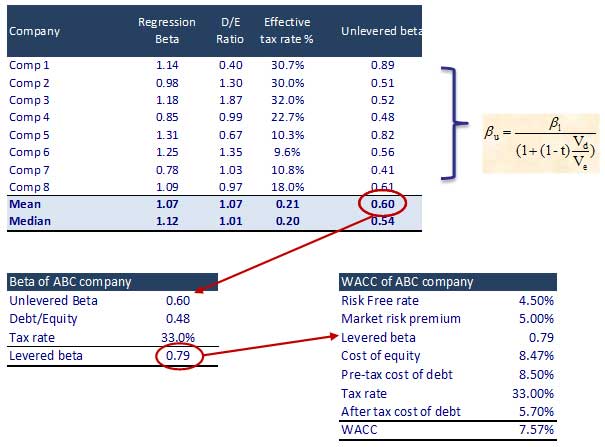Part – 14
In our last tutorial, we understood how to find a beta for a private company. Now, we will understand the market risk premium (MRP) concept in detail.
Definition of Market Risk Premium
The Market Risk Premium (MRP) measures the return that equity investors demand over a risk-free rate to compensate them for the volatility/risk of an investment that matches the volatility of the entire equity market. Such MRPs vary by country.
Market Risk Premium Formula
Two methods of calculating MRP are possible: historical or projected, having reference to both methodologies.
Historical
Utilizing historical equity results to arrive at a risk premium assumes that past market returns are the best indication of the premium investors will demand over the risk-free rate for prospective investments. By calculating the arithmetic or geometric average of past risk premia, this method is often considered objective because of its easily observable results. However, choosing the correct historical time horizon is quite subjective as it is difficult to know what past period gives the best estimate of future premia. For instance, data has been available since the 1970s, but today’s markets are very different. In seeking the premium over the risk-free rate for a long-term investment, a long-term (e.g., 10-year gilt) instrument is often used as a proxy for the risk-free rate.
Treasury Bill (Short-term Bonds)
- Short-term rates change significantly over time. The long-term average of the 3-month Treasury Bill would better approximate the real risk-free rate.
Treasury Bond
- In a DCF, you forecast five to ten years into the future. Long bonds represent a better match with the maturity of the cash flows in your DCF.
- A long bond’s yield includes the long-term forecast of inflation. A historical average of 3-month Treasury yields does not include an inflation forecast.
- Using the Treasury bill to help calculate the Equity Risk Premium is inconsistent if you use the Treasury bond as the risk-free rate in CAPM.
What comes into use practically?
Most analysts use ten-year government bonds.
Arithmetic average or Geometric average?
Arithmetic Average
- When you discount cash flows in your DCF, you use arithmetic calculations
Geometric Average
- As from the above table, the arithmetic average can have a bias if you change the measurement period.
- The geometric average better predicts the average premium over the long term.
What comes into use practically?
Arithmetic mean comes into use.
What do Analysts do?
- Most analysts use the arithmetic mean of the difference between the Treasury Bond Rate and the return on the Stock Market to estimate the equity risk premium for the CAPM equation.
Forecast
Rather than assume that yesterday’s equity markets will resemble tomorrow’s, one can calculate forecast market premia to account for structural changes in equity markets. The goal of calculating such a premium is to modify or replace historical data to factor in present knowledge and future expectations.
Step 1: Estimate the expected return on the market using the analyst’s forecasts of the market’s free cash flow to equity holders
Step 2: Rearrange the equation to solve for the cost of equity
Step 3: Current risk-free rates are normally assumed to be an indication of future risk-free rates, as treasury yield curve factors in such expectations
Preferred Method
Analysts regard both methods but have a bias towards the forecast method of estimating the market risk premium (in line with market practice). The Equity Research department should provide estimates of the appropriate forecast market risk premium in the appropriate country. Forecast premia allow a better match between a future market view and the forward-looking nature of relevant investment decisions analyzed in a DCF. Moreover, forward estimates better consider changes between historical and future markets. For instance, today’s equity markets are characterized by better information, faster and broad dissemination of relevant facts, larger and more sophisticated investors, and are bigger and more liquid than in the past. Furthermore, in today’s low inflation environment, it is widely perceived that the risks associated with holding equity have ceteris paribus lessened. Thus, historical premia are less useful as indicators of future performance than future premia projections.
Step 11 – Calculate Cost of Equity & WACC
Step 1: Identify the listed comparables and their Beta. Also, find the Unlevered Beta for comparables.
What Next?
We have understood the concept of market risk premium (MRP). We will proceed to understand enterprise value calculation in the next tutorial.
Recommended Articles
Here are some further related articles to learn more:



